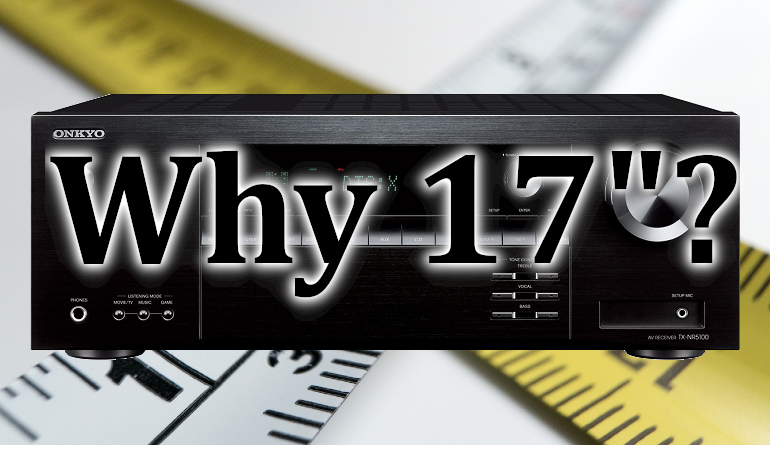Why Is AV Gear 17″ Wide?
As the AV enthusiast of my group, I am always asked about all things AV. Most of the questions center around setup or troubleshooting. And for the most part, I know a lot of the tricks. But sometimes I am asked an unexpected question that I don’t know the answer to. Case in point, why is AV gear 17” wide? Let’s discuss.
Blame “Ma Bell”
So after my buddy posed this question to me, I had to find out. Not just to answer him, but to expand my knowledge. It turns out that AV gear has its roots in telecom gear.
Back in the ‘20s, AT&T decided that all of their gear would fit in a 19” wide rack. Now to me, it makes sense to have a standard size for all the equipment. This way you know that no matter what you buy, it will fit in the standard rack. As to why 19” became the de facto standard, I don’t know. But it has endured and now a 19” rack is the common standard. This allows for a 17” wide component with 1” rack ears that are secured to the rack with screws.
But how does that translate to the 17” standard width that we see for audio gear?
Blame Pro Audio
So we know that because of AT&T we got the standard 19” rack. But how did we get to 17” gear? Professional audio applications. Typically, home stereos were an all-in-one affair, usually stuck into a cabinet enclosure that blends into your decor. Typically they were large and took up a fair amount of floor space.

Companies like Crown were common in the pro audio space. And their amplification gear, as was others, was designed to fit into the standard 19” rack mount. As separate components became more commonplace in the home space, companies like Crown straddled the two and maintained the rack mount standard.
But to maintain that 19” rack mount requirement, manufacturers adopted the 17” width to allow for 1” rack ears to be mounted, or a rack faceplate. This ensured that all components would fit the rack and could be used in the home or Pro settings. And it makes sense. Why would you change your manufacturing process and retool your line for a different size gear? As a result, a lot of older gear has spots for rack ears or faceplates. Heck, even my power conditioner still has them.
So Why Hasn’t It Changed?
Another good question. I don’t have an exact answer, but I can take a pretty good guess. The ‘80s and ‘90s became the era of the HiFi stack. These stacks and their associated stands were designed around the 17” standard. And as CD players and cassette decks and the like became popular, they adopted the 17” standard.
So as more and more products enter the markets, you aren’t going to stray away from the standard. Plus all the stands were designed to fit that standard, so you would be pushing away people who have components in that 17” form factor.
Aesthetics also plays a huge part in AV. I can tell you that I would shy away from a component that didn’t fit the size and aesthetic of my gear. I think it safe to assume that manufacturers don’t want to rock the boat and lose sales as a result.
Our Take
So, there you have it. For once, something we did in AV makes sense! And honestly, with how AV and technology have evolved, I am surprised that this standard survived.


